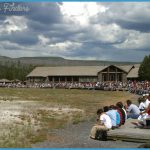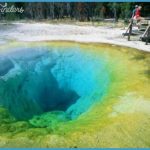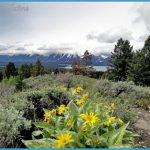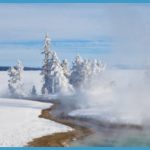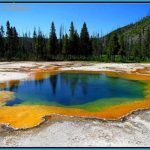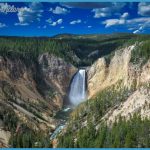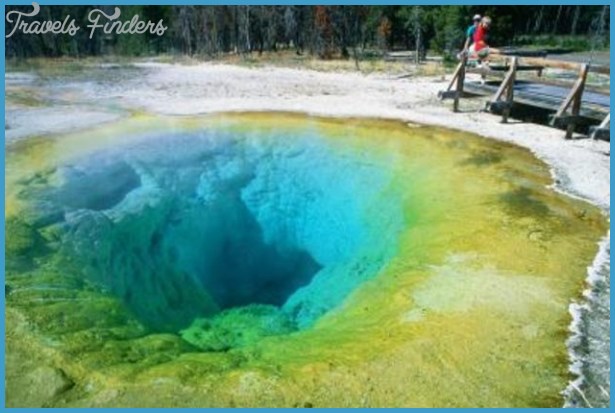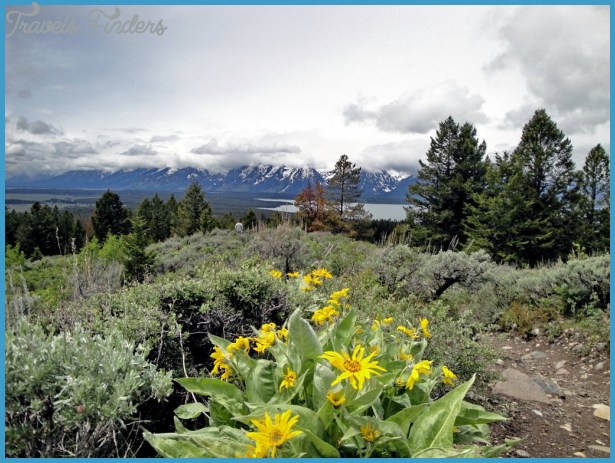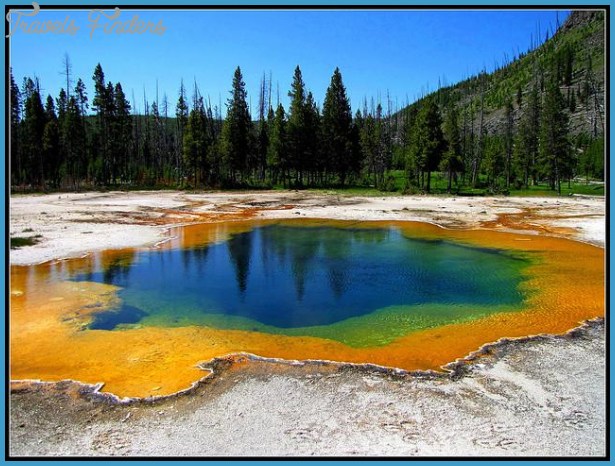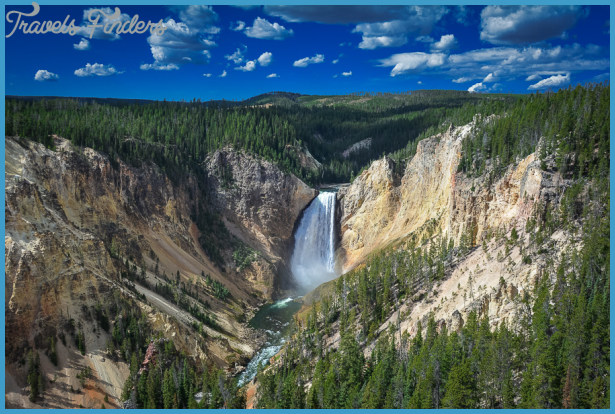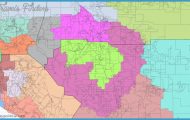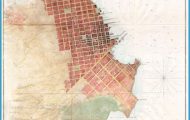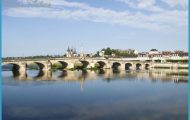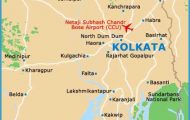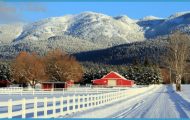Spring-May, June
When the snow has melted from the lowlands and the red bison calves are trailing after their mothers, you know springtime has come to Yellowstone. TEMPERATURE RANGE (DAY-NIGHT): 50s-60s °F (Teens °C); 30s °F (0-4°C)
PROS: Baby animals numerous, wildflowers (at lower elevations), waterfalls at their peak.
CONS: Some mountain passes closed, biting insects common, rain common, meadows flooded, streams very high.
Summer July, August
A time to enjoy hikes in the high country, long vigils in the geyser basins, and picnics along the riversides.
TEMPERATURE RANGE (DAY-NIGHT): 70s-low 80s °F (20s °C);
40s °F or below (below 9°C)
PROS: Wildflowers everywhere; drier trails in mid July and August; ripening berries in August; clear, starlit nights; fishing best in late July into September.
CONS: Visitor numbers at their peak, late afternoon thunderstorms, potential fire danger or hordes of grasshoppers in dry years.
Autumn September, early October
Brisk nights, cool but pleasant days, and great light for photography are some of the joys of this season.
TEMPERATURE RANGE (DAY-NIGHT): 40s-60s °F (5-20°C); freezing and below
PROS: Fewer visitors, elk gather and bugle, aspen turn golden, few mosquitoes.
CONS: Cold nights, greater chance of rain and snow.
Winter-mid October through April
A snowcoach can take you to Old Faithful or Canyon (December to March), where you’ll marvel at the beauty of steamy pools and frozen waterfalls. TEMPERATURE RANGE (DAY-NIGHT): Well below freezing to a few degrees above; usually freezing, often below 0°F (-18°C)
PROS: Cross-country skiing, ice-encrusted ghost trees, animals near roads. CONS: Extreme cold, heavy snows and severe storms, most roads are closed to cars.
Thimbleberries may be found along some park trails in late summer.

